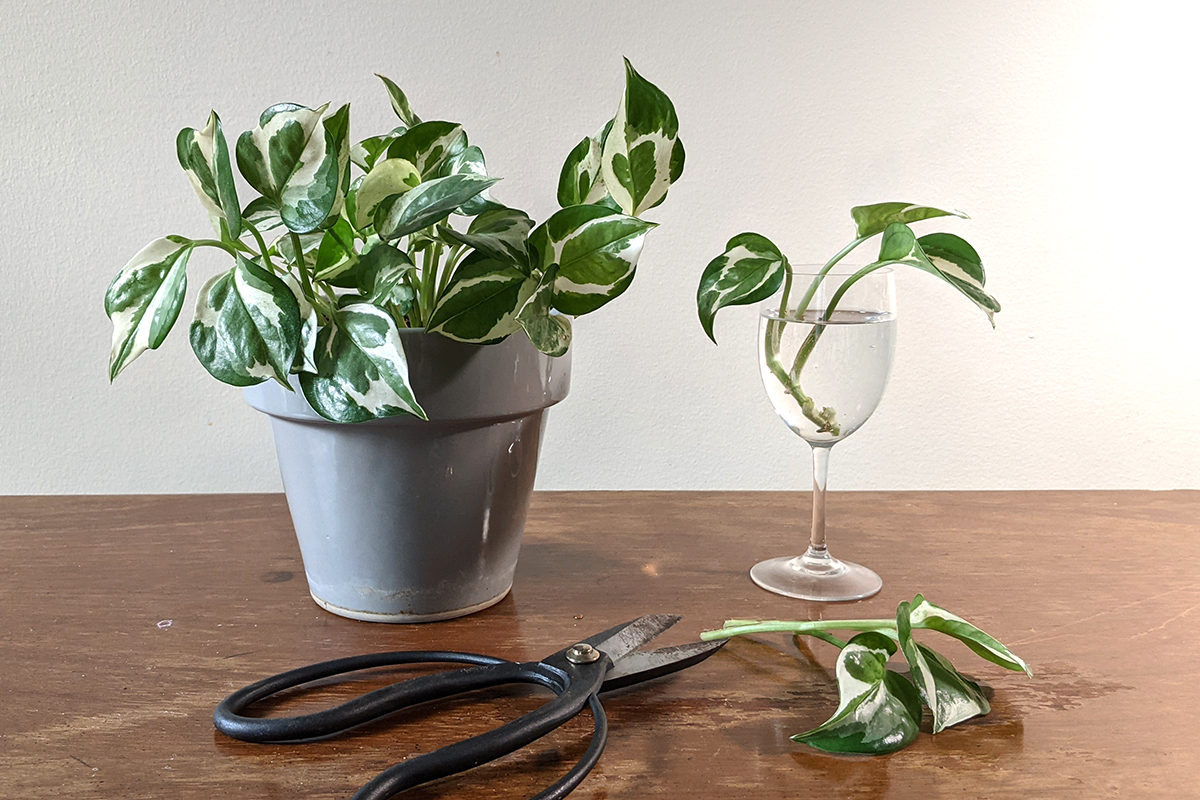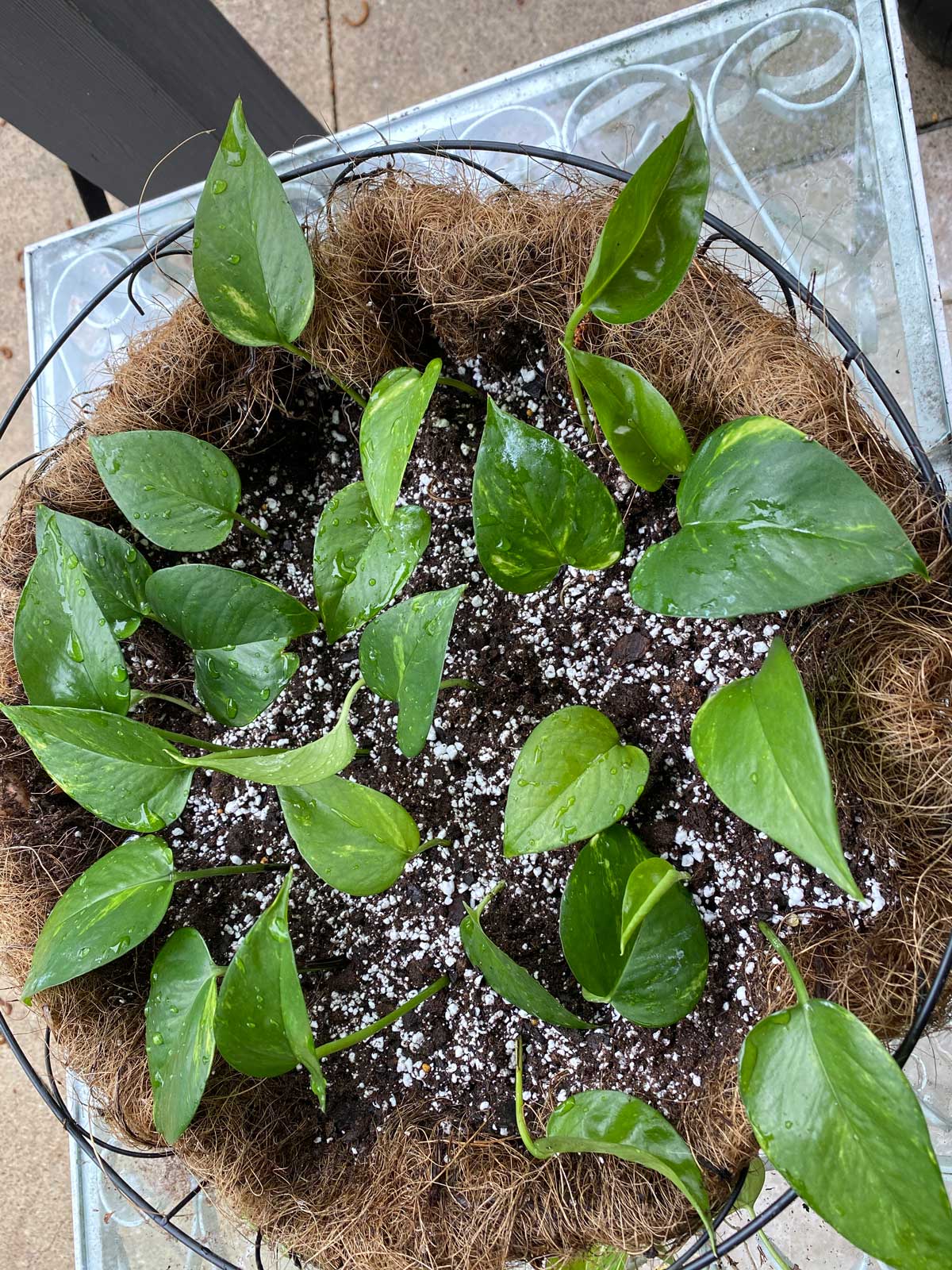Propagating a Pothos Plant

(Image Source: https://plantura.garden)
Pothos (Epipremnum aureum), also known as devil's ivy, is a popular and versatile houseplant admired for its lush foliage, air-purifying qualities, and ease of care. One of the most exciting aspects of owning a pothos plant is the ability to propagate it, creating new plants from the existing one. Whether you're a seasoned gardener or a beginner, propagating a pothos plant can be a rewarding and educational experience. This article aims to guide you through the process of propagating pothos plants, from understanding the different propagation methods to caring for the new cuttings. Once your new plant has the proper roots, STAG & MANOR has the perfect planters for continued growth.

(Image Source: https://plantura.garden)
Why Propagate Pothos?
Propagating a pothos plant serves several purposes. It allows you to expand your plant collection without having to purchase new plants, making it a cost-effective approach for green enthusiasts. Additionally, propagating your pothos can rejuvenate an older or leggy plant, ensuring it remains vibrant and healthy.

Propagation Methods
There are several methods to propagate pothos plants, each with its own set of advantages. Here are three common techniques:

Water Propagation: This is one of the simplest methods and is great for beginners. To propagate in water, follow these steps:
- Select a healthy vine from the parent plant.
- Cut a segment just below a node (the joint where leaves are attached to the stem). Nodes are essential for root growth.
- Place the cutting in a jar or vase filled with water, ensuring the node is submerged.
- Keep the jar in a bright, indirect light location.
- Change the water every week or when it becomes cloudy.

Soil Propagation: This method involves placing the cutting directly in soil for root growth. Follow these steps:
- Prepare a small pot with well-draining soil mix.
- Take a cutting just below a node and remove any leaves near the bottom.
- Plant the cutting in the soil, burying the node.
- Water the cutting lightly and place the pot in a well-lit spot with indirect sunlight.

(Image Source: https://plantura.garden)
Sphagnum Moss Propagation: This method is similar to soil propagation but uses sphagnum moss to encourage root development. Here's how to do it:
- Soak sphagnum moss in water until it's moist but not dripping.
- Take a cutting as before and wrap the moss around the node.
- Enclose the moss-covered node in plastic wrap or a plastic bag to maintain humidity.
- Place the wrapped cutting in a bright, indirect light location.
Caring for Propagated Cuttings
Regardless of the propagation method you choose, proper care is essential for successful root development and plant growth. Here are some tips to ensure your propagated pothos cuttings thrive:
-
Light: Provide bright, indirect light for your cuttings. Avoid direct sunlight, as it can scorch the delicate new growth.
-
Humidity: Maintain a humid environment, especially for cuttings in water or sphagnum moss. This can be achieved by misting the cuttings or placing a humidity dome over them.
-
Watering: Keep the soil or water consistently moist but not waterlogged. Overwatering can lead to root rot, while underwatering can hinder root development.
-
Root Development: Be patient. Root development can take several weeks to a few months, depending on the method and environmental conditions.
-
Transplanting: Once the cuttings have developed a healthy root system, you can transplant them into larger pots with regular potting mix.
:max_bytes(150000):strip_icc()/hawaiian-pothos-growing-guide-7092450-hero-A-cd0d4bba36284002a7dd3be7ef419cf9.jpg)
Propagating a pothos plant is a gratifying journey that allows plant enthusiasts to explore the world of plant reproduction. With the right technique, patience, and care, you can create new thriving pothos plants to enjoy or share with friends and family. Whether you choose water propagation, soil propagation, or sphagnum moss propagation, the process offers an opportunity to learn about plant biology and nurturing plant life from its very beginnings. So, grab your clippers and get ready to embark on a rewarding adventure of propagating your pothos plants.
Shop Propagation Vases
Canyon Wall Mount Vase Exposed Clay



